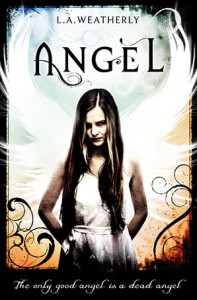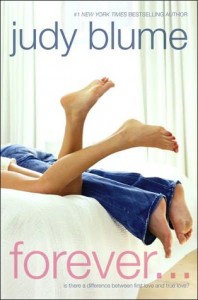
If you’re the ‘Oh please not another supernatural romance!’ type, just close this window and go tweet/ play Angry Birds/ do something with your life instead. I’m like that sometimes, too. I think everyone is pretty much fed up to the back molars with supernatural romance.
But now that I’m left with readers who have a slightly higher degree of tolerance for the accursed genre, let’s go on.
Angel is the story of a young girl who is a bit witchy and a bit rebellious, and who might possibly perhaps not be quite exactly human. And she’s in grave danger, because some people who are not human at all have noticed that there’s something strange about her. And the person they send to hunt her down unfortunately finds himself strangely drawn to the way she holds her hair and wears her tracksuit bottoms. A road trip and a final battle ensue, and between the two, a change of allegiances.
Sorry, this has been a bit of a dismissive and cynical review so far. The truth is, this book is so American, and so YA. By that I mean that it is full, firstly, of derelict cars and shabby motels, and secondly, of rebellious behaviour and sexual tension. Neither of which I have a lot of patience for, but you may do, and I’m just so totally cool with that.
However, this is not – no, really – to say that Angel is not worth reading. It is gripping, it is dramatic, it is enjoyable. But most of all, it has a very interesting and original feature – its depiction of ‘angel churches’ inspired from televangelical Christians in the US. This, I think, is truly where the interest of the book lies, and it is L.A. Weatherly’s best idea.
(The following paragraph gives away some information from the book, but nothing crucial past the first half.)
The ‘angels’ in the book are bad angels, but they are beautiful and hypnotic, and they feed on human souls. In order to sustain this diet, they entrance their ‘food’ into creating huge angel churches for the rest of the nation to adhere to and to be, in turn, fed on.
(End of spoilers)
The book truly succeeds at depicting a bureaucratic, impenetrable, mysterious, sectarian organisation which is almost a perfect mirror image of the American evangelical Christian churches with their factory-sized buildings and their governmental lobbies. A daring move, I think, on Weatherly’s part, whether or not she was fully aware of it, and one that, to my knowledge, no angry American evangelist has yet picked up on. Willa and Alex’s struggle against this battalion of beautiful, well-meaning monsters makes for a really quite neat condemnation of corporate and aggressively propagandist organised religion.
In other words, despite the deprecatory tone of the first part of this review, I did enjoy Angel and I would recommend it. There is a real social and political critique lurking in the margins of the clumsy romance, and I am looking forward to reading the next volumes to see whether it delivers.
by Clementine







